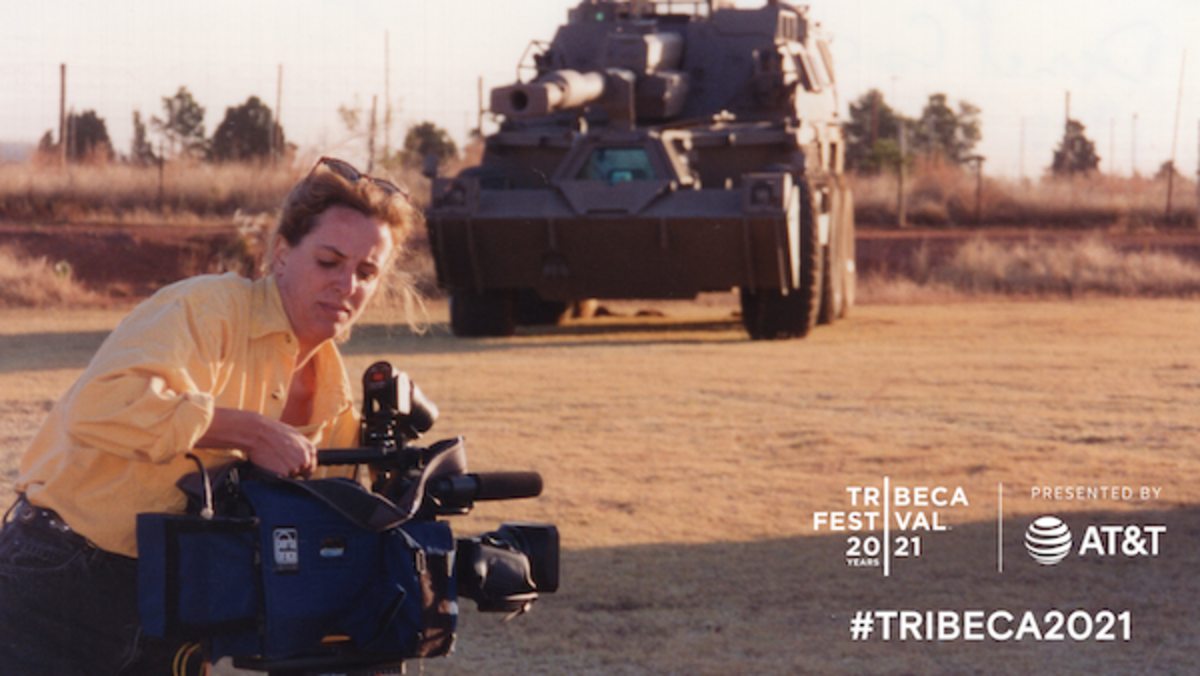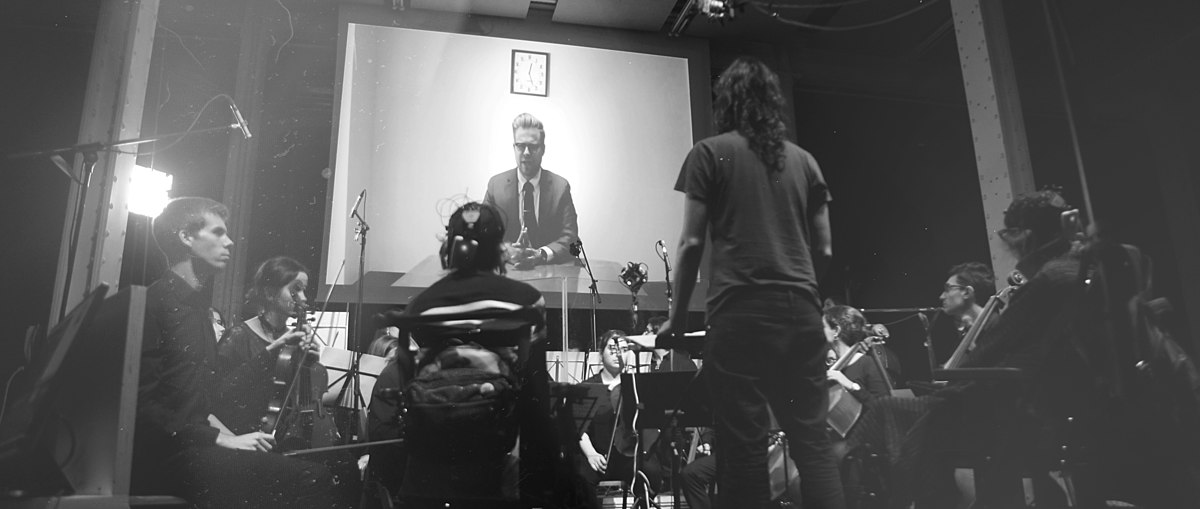The Art and Craft of Documentary Filmmaking: A Journey Through Reality
Documentary filmmaking is often perceived as the purest form of filmmaking, a venture that immerses its audience into the depths of real-life stories, environments, and characters. By capturing truth with a lens, documentary filmmakers endeavor to shed light on hidden narratives and inspire change, offering audiences an unfiltered glimpse into the human condition. This venerable genre of film is not merely an exploration of events but a distinct art form that demands creativity, empathy, and integrity. In this piece, we delve into the intricacies of documentary filmmaking, exploring its origins, evolution, and the evocative power it holds in today's world.
The Evolution of Documentary Filmmaking: From Lumière to Modern Day
Documentary filmmaking has come a long way since its inception in the late 19th century. The genre began with the Lumière brothers, who are often credited with creating the first true documentaries using their invention, the Cinématographe. Their 1895 film, "Workers Leaving the Lumière Factory," is a simple, short film that became a pioneering work in capturing real-life moments, setting the foundation for future documentary films.
The subsequent evolution of documentary filmmaking was heavily influenced by the pioneering work of filmmakers like Robert Flaherty, who directed "Nanook of the North" in 1922. This film introduced audiences to the harrowing and resilient lives of the Inuit people. Flaherty's work was groundbreaking in its approach to storytelling, combining ethnography with cinema verité, a style that aims to truthfully represent the reality of its subjects.
As technology advanced, so did the sophistication and scope of documentaries. The advent of sound in cinema, followed by portable cameras and digital film, changed the landscape entirely. Documentaries became increasingly accessible to filmmakers and audiences alike, allowing for a broader range of perspectives and subject matter. This transformation paved the way for a diverse array of documentaries, from the cinéma vérité movements of the 1960s to the socially conscious films of the present day, engaging audiences worldwide with their compelling narratives and visual storytelling.
Essential Elements of Documentary Filmmaking
Creating a documentary is a multifaceted process requiring a blend of technical skill, narrative flair, and ethical consideration. Each documentary seeks to strike a balance between subjectivity and objectivity, displaying real-world events while providing space for interpretation and emotional engagement. Below are some key elements that constitute effective documentary filmmaking:
1. **Story and Structure:**
At the heart of any documentary lies its story—the lifeblood that captivates audiences, evokes emotions, and drives the narrative forward. Whether spotlighting a social issue, a historical event, or a remarkable individual, the story must be authentic, engaging, and relevant. Documentary filmmakers often use interviews, observational footage, and archival materials to construct their narratives. The structure of a documentary varies; some follow a linear progression, while others may employ a thematic or cyclical approach.
2. **Visuals and Cinematography:**
Documentary visuals must be compelling yet authentic, enhancing the storytelling rather than overpowering it. The power of imagery in documentaries often lies in its sincerity—a careful balance between artful composition and unobtrusive observation. Masterpieces like "The Act of Killing" or "13th" have shown how powerful cinematography can elevate a documentary's impact, emphasizing underlying themes and emotions.
3. **Ethics and Objectivity:**
Documentary filmmakers navigate a complex ethical landscape, balancing the responsibility to truthfully represent their subjects with the inherent subjectivity of their perspectives. Filmmakers must be vigilant in maintaining integrity, ensuring that they represent their subjects fairly and without bias. Ethical considerations also extend to film editing, as narrative choices can significantly alter perceptions of reality.
4. **Sound Design and Music:**
Sound design in documentaries serves as both a complement and a counterpoint to visuals. It immerses the viewer into the narrative, often invoking emotional responses through tone, atmosphere, and rhythm. Music, too, plays a pivotal role; iconic documentaries like "Grizzly Man" feature transcendent soundtracks that resonate with the film's themes, weaving together an auditory tapestry that enriches the viewing experience.
5. **Audience Engagement and Impact:**
The ultimate goal of a documentary is to provoke thought, spark dialogue, and inspire action. Some documentaries aim to educate, while others seek to raise awareness or effect social change. Audience engagement can also shape a documentary's influence, multiplying its reach and impact as viewers discuss and share the film's message within their communities.
Challenges and Rewards of Documentary Filmmaking
Documentary filmmaking is fraught with unique challenges that differ from those faced by narrative filmmakers. Filmmakers must grapple with practical and philosophical questions, including access to subjects, the potential for bias, and the portrayal of sensitive issues. Funding can also pose significant challenges, as documentaries often require extensive research and time investment before filming can even commence.
However, the rewards of documentary filmmaking are manifold. There is a profound satisfaction in giving voice to unheard stories and contributing to societal change. Films like "Blackfish" exemplify the impact that documentaries can have, instigating corporate policy changes and global conversations about animal rights.
Throughout history, documentary filmmakers have harnessed the medium's potential to confront injustices, illuminate diverse cultures, and retain human experiences. The exploration of truth and reality in documentary filmmaking continues to resonate with audiences today, breathing life into the stories that define our collective humanity. With each new generation of filmmakers, documentaries persist as a powerful tool for change, revealing new possibilities for understanding the world and our place within it.
As the landscape of documentary filmmaking continues to evolve, empowered by technological advancements and shifting cultural landscapes, its role as a catalyst for awareness and transformation remains unwavering, fueling conversations and connecting audiences with the world around them.
Technological Innovations Transforming Documentary Filmmaking
The dynamic landscape of technology continually reshapes the art of documentary filmmaking, enabling filmmakers to explore new dimensions in storytelling while broadening access to both production and viewership. These technological innovations are not merely tools; they are transformative agents that redefine the boundaries of reality capture, narrative construction, and audience engagement.
1. **Digital Revolution and Accessibility:**
The digital revolution has democratized documentary filmmaking, providing filmmakers with access to an arsenal of tools that were once prohibitively expensive. High-quality digital cameras, drones, and mobile devices have made it possible to capture cinematic-quality footage on tighter budgets. The accessibility of editing software such as Adobe Premiere Pro and Final Cut Pro has further empowered independent filmmakers, allowing them to edit and produce professional-grade films without substantial financial backing.
This democratization extends beyond production into distribution. VOD (Video on Demand) platforms like Netflix, Vimeo, and YouTube have exponentially expanded the reach of documentaries. Filmmakers can now bypass traditional distribution channels, bringing their stories directly to a global audience, nurturing grassroots movements, and engaging viewers across diverse demographics and geographies.
2. **Virtual Reality and Immersive Experiences:**
Virtual Reality (VR) is revolutionizing how documentaries are experienced, transporting audiences into the heart of their stories. Filmmakers can now craft 360-degree environments that allow viewers to step inside the narrative and engage with it interactively. This heightened sense of immersion can transform documentaries from passive viewing experiences into participatory journeys, fostering empathy and understanding.
For instance, VR projects like "Clouds Over Sidra" have demonstrated the technology's ability to evoke strong emotional responses. By placing viewers in a Syrian refugee camp, the film creates a sense of presence and connection, offering a profound understanding of the refugees' lives and challenges. VR opens unprecedented avenues for documentary storytelling, promising to deepen engagement and push the boundaries of empathic communication.
3. **Data and Interactive Documentaries:**
The proliferation of data has also made its impact felt in the realm of documentaries. Filmmakers now have the resources to compile and analyze vast amounts of information, using data visualization to enhance storytelling. By integrating data-driven insights with emotional narratives, documentaries can offer a more comprehensive understanding of complex topics.
Interactive documentaries leverage technology to engage audiences on a deeper level, offering them agency within the narrative. Films like "Hollow" engage viewers by allowing them to explore stories in a non-linear fashion, selecting emerging threads to follow according to their interests. This customization fosters active participation, empowering audiences to delve into self-directed explorations of the subject matter.
The Role of Documentary Film Festivals
While technological innovations and platforms have expanded accessibility, documentary film festivals remain crucial in cultivating and celebrating the genre. These festivals provide a hub for filmmakers, industry professionals, and audiences to gather, collaborate, and honor the art of documentary storytelling.
Festivals like Sundance, Hot Docs, and IDFA (International Documentary Film Festival Amsterdam) serve as essential marketplaces for documentaries to gain exposure, find distribution partners, and secure funding. They offer filmmakers the opportunity to connect with peers, attend workshops, and participate in panels that foster industry dialogue and growth. Moreover, public screenings at these festivals help generate buzz, attract media attention, and ultimately amplify the social impact of documentary films.
Film festivals are also pivotal in showcasing diverse voices and stories that might otherwise remain marginalized. By highlighting underrepresented perspectives, they contribute to a broader and more inclusive narrative landscape, challenging dominant paradigms and encouraging cross-cultural exchange.
The Future of Documentary Filmmaking: Challenges and Opportunities
As documentary filmmaking continues to evolve, it faces both exciting opportunities and significant challenges. The rise of short-form content on social media platforms and the growing popularity of episodic series on streaming services present new possibilities for storytelling. Documentary filmmakers can experiment with formats, create episodic narratives that delve deeper into complex subjects, and engage audiences in innovative ways.
However, this digital age also brings challenges. The sheer volume of content available can lead to oversaturation, making it difficult for individual documentaries to stand out. Filmmakers must devise creative strategies to capture attention and differentiate their work in a crowded marketplace. Additionally, the instant availability of information online can sometimes overshadow traditional investigative documentaries, prompting them to adapt their approaches to remain relevant and insightful.
Furthermore, as documentaries increasingly intersect with activism, filmmakers must navigate a fine line between storytelling and advocacy. While documentaries have the power to inspire change, maintaining a balance between raising awareness and preserving journalistic integrity is paramount.
As we look ahead, the future of documentary filmmaking is undeniably promising. Emerging technologies, innovative storytelling techniques, and a committed global audience ensure that the genre will continue to thrive and adapt, shedding light on untold stories and catalyzing positive change. Documentaries remain a vital mirror to our world, reflecting its complexities, triumphs, and tribulations, and fostering a deepened understanding of the lived realities that unite us all.
The Impact of Documentary Filmmaking on Society
Documentary filmmaking is a potent catalyst for social change, wielding the power to inform, persuade, and mobilize audiences. By illuminating pressing issues and diverse stories from around the globe, documentaries play a crucial role in shaping societal narratives and influencing public discourse.
1. **Raising Awareness and Driving Advocacy:**
Documentaries have the unique capability to spotlight underreported or misunderstood issues, drawing public attention to causes that might otherwise go unnoticed. Through emotive storytelling and compelling visuals, they can humanize complex topics, making them accessible and relatable. Films like "An Inconvenient Truth" raised global awareness about climate change, becoming an educational tool and sparking widespread environmental advocacy.
Furthermore, documentaries often serve as catalysts for activism, equipping viewers with the knowledge and motivation needed to advocate for change. By providing viewers with a clear understanding of issues and potential solutions, documentaries inspire grassroots movements and drive policy reform. An example of this is "The Cove," which exposed the brutal practice of dolphin slaughter in Japan, leading to international protests and increased conservation efforts.
2. **Preserving Cultural Heritage and History:**
Documentaries also play a vital role in preserving cultural heritage and the historical record. By capturing and archiving stories, traditions, and events, documentaries ensure that future generations can access and learn from the past. Filmmakers act as cultural historians, documenting communities and practices that may be threatened by globalization, technological advancement, or political unrest.
Films like "Buena Vista Social Club" celebrate the rich musical heritage of Cuba, while "The Square" captures the fervor and complexity of the Egyptian Revolution, preserving pivotal moments that might otherwise fade from memory. By documenting these realities, filmmakers contribute to a collective understanding of our shared history, fostering cultural pride and continuity.
3. **Fostering Empathy and Understanding:**
One of the most powerful aspects of documentaries is their ability to build empathy by facilitating a deep emotional connection between audiences and subjects. By revealing the nuances of human experiences, filmmakers can bridge cultural gaps and foster a greater understanding of diverse perspectives.
Documentaries like "Life, Animated," which tells the story of an autistic man's journey using Disney films to communicate, can profoundly impact viewers by promoting inclusivity and challenging existing stigmas. By presenting personal stories through an authentic lens, documentaries humanize abstract issues, encouraging audiences to rethink prejudices and assumptions.
The Role of Education in Documentary Filmmaking
Education is an integral component of documentary filmmaking, influencing both the creation and consumption of films. Aspiring filmmakers often seek educational opportunities to hone their craft, gain industry insights, and develop their unique storytelling voice. Many universities offer specialized programs in documentary filmmaking, providing students with access to experienced instructors, state-of-the-art equipment, and immersive learning environments.
For viewers, documentaries serve as invaluable educational tools—whether in classroom settings or informal learning environments. Educators incorporate documentaries into curricula to enrich lessons across subjects, using films to complement textbooks and stimulate critical thinking. Documentaries encourage learners to engage with real-world issues and analyze content from multiple perspectives, promoting an interdisciplinary approach to education.
Moreover, many documentary filmmakers engage in educational outreach by providing complementary resources, workshops, and discussions alongside their films. These initiatives aim to deepen viewer engagement, prompting reflection, dialogue, and action beyond the screen.
Empowering Future Documentary Filmmakers
As we contemplate the future of documentary filmmaking, embracing fresh voices and perspectives from underrepresented communities is paramount. Empowering aspiring filmmakers with skills, resources, and platforms ensures the continued growth and evolution of the genre.
Film labs, grants, and mentorship programs play a vital role in supporting emerging filmmakers, offering access to industry professionals, funding, and networking opportunities. Collaborative initiatives like the Sundance Institute Documentary Lab and Chicken & Egg Pictures provide nurturing environments, emphasizing the importance of diversity in storytelling.
Furthermore, grassroots initiatives and community media centers offer fledgling filmmakers the chance to experiment with documentary filmmaking, often focusing on local stories that resonate on a global scale. By championing inclusivity and accessibility, these programs create a space where marginalized voices can be heard and celebrated.
In the age of social media and digital communication, collaboration and community-building among filmmakers are more vibrant than ever before. Online forums, virtual workshops, and global film communities offer unprecedented connectivity, enabling filmmakers to share insights, resources, and encouragement across borders.
Conclusion: The Ever-Evolving Narrative of Documentary Film
Documentary filmmaking continues to captivate and challenge, serving as both a reflection of and an impetus for social transformation. Its power lies in its authenticity, its ability to capture the essence of truth while illuminating the complexities of the human experience. As technology advances and storytelling techniques evolve, documentaries promise to reach new heights, transcending traditional boundaries and inspiring change across hemispheres.
In a world where information is abundant yet often fleeting, documentaries stand as enduring monuments to the human spirit, offering insights that educate, motivate, and connect us to one another. The future of documentary filmmaking is bright, guided by a new generation of storytellers who continue to push the boundaries of creativity and innovation. Through their lens, we see not just the world as it is, but the world as it could be—offering hope, understanding, and a shared vision for a better tomorrow.





















Comments